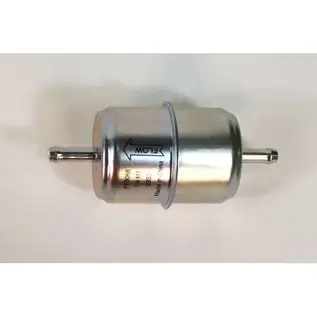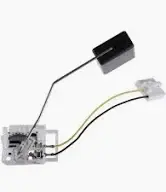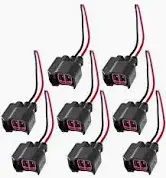

Wholesale Auto Parts in Miami
Wide Selection of Auto Parts for All Vehicle Makes and Models
Fuel Management
Frequently Asked Questions (FAQs) about Fuel System Parts
1. What is the role of a fuel filter in a vehicle's fuel system?
-
Answer: The fuel filter removes contaminants, dirt, and debris from the fuel before it reaches the engine. This helps protect the fuel injectors and engine from damage and ensures optimal performance. It should be replaced periodically to maintain fuel flow and efficiency.
2. How do I know when to replace my fuel pump?
-
Answer: Signs that your fuel pump may need replacement include:
-
Difficulty starting the engine or the engine failing to start.
-
Stalling, especially at high speeds.
-
A whining noise coming from the fuel tank.
-
Reduced engine power and acceleration.
-
Poor fuel efficiency.
-
-
If you notice any of these symptoms, it’s recommended to have the fuel pump tested or replaced.
3. What are the signs of a bad fuel injector?
-
Answer: Common signs of bad fuel injectors include:
-
Poor fuel economy.
-
Engine misfires or rough idling.
-
Check Engine Light (CEL) activation.
-
Increased exhaust emissions or black smoke from the exhaust.
-
Decreased engine power or hesitation during acceleration.
-
4. How can I tell if my fuel pressure regulator is failing?
-
Answer: Symptoms of a failing fuel pressure regulator include:
-
Poor engine performance (hesitation, stalling, or rough idling).
-
Increased fuel consumption.
-
Fuel smell or leaks around the regulator.
-
Check Engine Light illumination with codes related to fuel pressure or evaporation emissions.
-
5. When should I replace my fuel filter?
-
Answer: The fuel filter should typically be replaced every 30,000 to 40,000 miles, but this can vary depending on your vehicle's make and model. Consult your owner's manual for specific recommendations. If you notice sluggish acceleration, stalling, or a decrease in fuel efficiency, the fuel filter might need to be replaced sooner.
6. How often should I replace my fuel injectors?
-
Answer: Fuel injectors don’t have a set replacement interval, but they may need to be cleaned or replaced if they become clogged or malfunction. If you notice symptoms like rough idling, poor acceleration, or black smoke from the exhaust, the injectors may need to be inspected or replaced.
7. Can a faulty fuel pump cause the Check Engine Light to turn on?
-
Answer: Yes, a faulty fuel pump can trigger the Check Engine Light (CEL), especially if it causes fuel delivery issues. The onboard diagnostic system may detect fuel pressure problems or poor fuel flow, leading to error codes that activate the CEL.
8. What is the purpose of the fuel tank in a vehicle?
-
Answer: The fuel tank stores gasoline or diesel fuel for the engine. It also ensures a consistent supply of fuel to the fuel pump, which then sends it to the fuel injectors. The tank also includes features like a fuel gauge and safety valves to prevent spills and leakage.
9. How do I know if my fuel lines are clogged or leaking?
-
Answer: Signs of clogged or leaking fuel lines include:
-
Gasoline smell near the vehicle.
-
Fuel puddles under the car.
-
Engine misfires or stalling.
-
Difficulty starting the car.
-
Reduced engine power.
-
-
If you detect any of these issues, it’s crucial to have your fuel lines inspected and replaced if necessary.
10. What does a fuel rail do in a vehicle's fuel system?
-
Answer: The fuel rail distributes pressurized fuel from the fuel pump to the fuel injectors. It ensures that each injector receives the appropriate amount of fuel for combustion. The fuel rail is typically located on top of the engine and works with the fuel pressure regulator to maintain consistent fuel pressure.
11. What happens if I don’t replace a clogged fuel filter?
-
Answer: If a fuel filter becomes clogged and is not replaced, it can restrict fuel flow to the engine, leading to reduced engine performance, misfires, or stalling. In extreme cases, a clogged filter can cause the fuel pump to overwork, leading to premature failure.
12. How does a fuel pressure sensor work?
-
Answer: The fuel pressure sensor monitors the pressure of the fuel in the system. It sends this information to the engine control unit (ECU), which adjusts fuel delivery based on the readings to optimize performance. A faulty fuel pressure sensor can lead to incorrect fuel pressure readings and poor engine performance.
13. Why is my vehicle's fuel tank venting system important?
-
Answer: The fuel tank venting system ensures that fuel vapors are properly vented to the fuel vapor recovery system (such as the EVAP system) to prevent pressure buildup in the tank. If the vent system fails, it can lead to fuel vapors escaping, triggering the Check Engine Light and causing fuel system performance issues.
14. What is the function of the fuel cap in the fuel system?
-
Answer: The fuel cap seals the fuel tank, preventing fuel vapors from escaping into the atmosphere and keeping dirt and contaminants out of the tank. It also helps maintain the correct pressure in the fuel system. A malfunctioning or loose fuel cap can lead to the Check Engine Light coming on and affect engine performance.
15. What are the benefits of upgrading to a performance fuel system?
-
Answer: Upgrading to a performance fuel system, such as a high-flow fuel pump or performance fuel injectors, can improve engine performance, provide more power, and optimize fuel delivery for high-performance engines. These upgrades are often used in racing or modified vehicles to ensure proper fueling under high-load conditions.
16. How do fuel additives work?
-
Answer: Fuel additives are chemicals added to the fuel to clean the fuel injectors, remove carbon deposits, improve combustion efficiency, and prevent corrosion in the fuel system. Some additives are designed to improve fuel stability, while others are used to clean the engine and prevent fuel system problems.
17. What is the difference between a fuel pump relay and a fuel pump?
-
Answer: The fuel pump relay is an electrical component that controls the power supply to the fuel pump. It ensures that the fuel pump operates when needed. If the fuel pump relay fails, the fuel pump won’t receive power and the engine may not start. The fuel pump itself is responsible for moving fuel from the tank to the engine.
18. Can using low-quality fuel affect the fuel system?
-
Answer: Yes, using low-quality fuel can cause contaminants to enter the fuel system, potentially clogging fuel injectors, fuel filters, or damaging the fuel pump. It can also lead to poor engine performance, increased emissions, and reduced fuel efficiency.
19. How can I maintain my fuel system for better performance?
-
Answer: To maintain your fuel system:
-
Replace the fuel filter regularly.
-
Use high-quality fuel and consider fuel additives for cleaning.
-
Check and replace faulty fuel injectors and fuel pumps.
-
Ensure that the fuel lines are free from leaks or cracks.
-
Keep the fuel cap in good condition and ensure it seals properly.
-
20. What causes fuel system pressure to drop?
-
Answer: Fuel system pressure can drop due to:
-
A failing fuel pump.
-
A clogged fuel filter or damaged fuel lines.
-
A malfunctioning fuel pressure regulator.
-
Leaks in the fuel system, such as in the injectors, fuel rail, or fuel tank.
-
Faulty sensors or a damaged fuel pressure regulator.
-

















